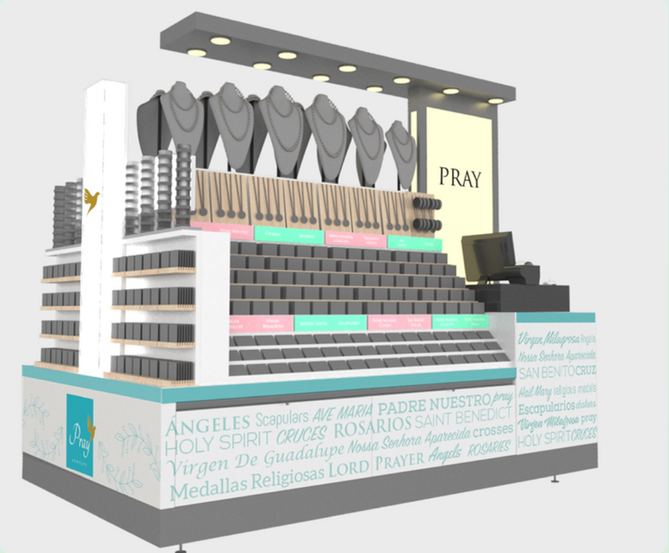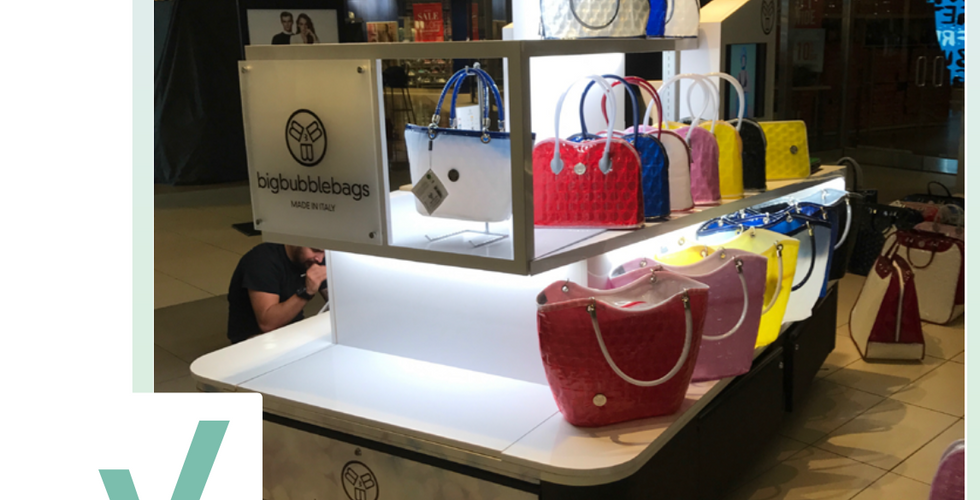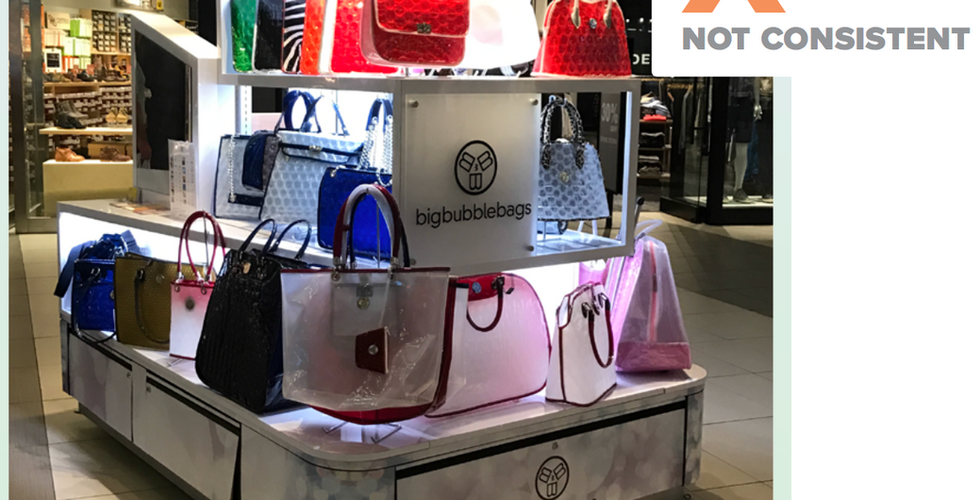10 tips for effective Visual Merchandising
- Yohany Albornoz

- Feb 20
- 4 min read
Effective visual merchandising is the key to attracting customers, increasing engagement, and driving sales—whether in retail stores, mall kiosks, or RMU setups. In my previous article, I explained how store design and consumer psychology shape purchasing behavior. This time, I want to go deeper and share 10 actionable techniques that will help you create clear, engaging, and high-converting retail displays.
With over 10 years of experience helping businesses in Miami, across Florida, and nationwide, I’ve seen firsthand how a well-planned store layout, lighting strategy, and product presentation can increase perceived value and customer interest. Some of these tips are based on traditional best practices, while others incorporate consumer psychology and neuromarketing insights, shaping what I like to call NeuroVisual Merchandising (maybe 🤷♀️) —the future of retail display strategy.
1. IDENTITY
Environment should talk to the customer so you can be easily recognizable now and in the future, this is why it is important to have a visible signage with your brand name, corporate colors and graphics so the client easily understand who you are and can reach back online or offline.

2. COLORS
Should be part of your brand identity and be at the service of the whole concept. Colors should help express the message, which is the story you want to tell, should match and serve to frame the product or as a background to make it stand out, you can also see this article where I share 5 ways to combine colors so they visually match.

3. FOCAL POINT
Is the part of the set that will grab the customer's attention and are typically at the eye level, they cause effortless impact and interest, are aligned with the whole concept being presented and invite to see the rest of the merchandise.
4. LEVELS
When everything looks flat it does not grab attention, we need visual interruption to focus on the product, coordinated differences of height that will help us understand each product, this is important because it is really hard to sell something to someone if they don't understand what is it and how it works, when that happens they will just move forward to the next thing they find appealing.
That said, levels can help us create visual interest and set spots for specific products so they can be easy to see and understand independently.
It is also important to notice the difference between eye level, hands level and knees level.
Most important items should be placed at the eye level, they will be easier to see. They should be placed vertically facing the consumer so they are easy to see, whether hung or shelved.
Complementary items can be placed at hands level, at that height products are less visible but easy to grab and explore. Products should not be laid flat, but inclined making it easier for the customer to understand them. It is highly important to notice that unconsciously the lower the product, the lower their perceived value, so at that level merchandise might be considered less valuable for the customers.
Finally, anything placed at knees levels or lower is often out of sight for the customer, and of course they are perceived as products of less value among the whole collection. The angle of the display is highly important to help understand the product, products placed vertically could be hard to see.
5. CONSISTENCY, BALANCE, REPETITION
This allows the eye the chance to see more products at the same time, relate them together as a group and have a better understanding in a short amount of time, and also from the distance.
6. LIGHTING

Products should be easy to see, lighting helps to emphasize the product, and gives a clear and cleaner look.
Imagine that you have the same exact display, but one with light and one without. Which one do you, which one will look more appealing to you?.
7. THE POWER OF 3 AND PYRAMIDING
Neuromarketing tells us about the brain being impacted when it sees objects grouped in 3, it is also well known how creating a pyramid can act as a focal point itself where the eye goes to the top and moves along to explore everything around, which leads to an effective tactic to group merchandise this way.
8. DISPLAYS SHOULD BE DIFFERENT FOR MEN AND WOMEN
While men are attracted to unique and simple elements, they usually focus on one spot, women tend to have a panoramic view, and enjoy having many options. This knowledge helps us understand how we can better target our merchandising in a case that is aimed to a man or a woman.
9. TANGIBLE
The consumer likes to feel, touch the product, whatever is tangible. For this reason our visual merchandising strategy should be oriented to provide the customers the opportunity to feel the product, to provide a shopping experience that will connect with their limbic system.
10. BRAIN IS OPEN TO CREATIVITY
Brain is immediately attracted to anything it doesn’t know and tries to understand it. Presenting merchandise on a different and innovative way is a good strategy to grab customers attention. The example below is a package created by Kempertrautmann Agency in Germany, I love the very creative presentation of the package to promote the product.

Need expert guidance to optimize your store layout, mall kiosk, or RMU setup? At The Marketer Architect Agency, we specialize in retail design, visual merchandising, and consumer-focused strategies that increase engagement and sales.
📍 Based in Miami, Florida, we work with clients across the state and nationwide.
🔹 Let’s transform your retail space into a high-performing sales environment! Contact us today to discuss how we can help.
📩 Get in touch here: Contact Link

























Comments